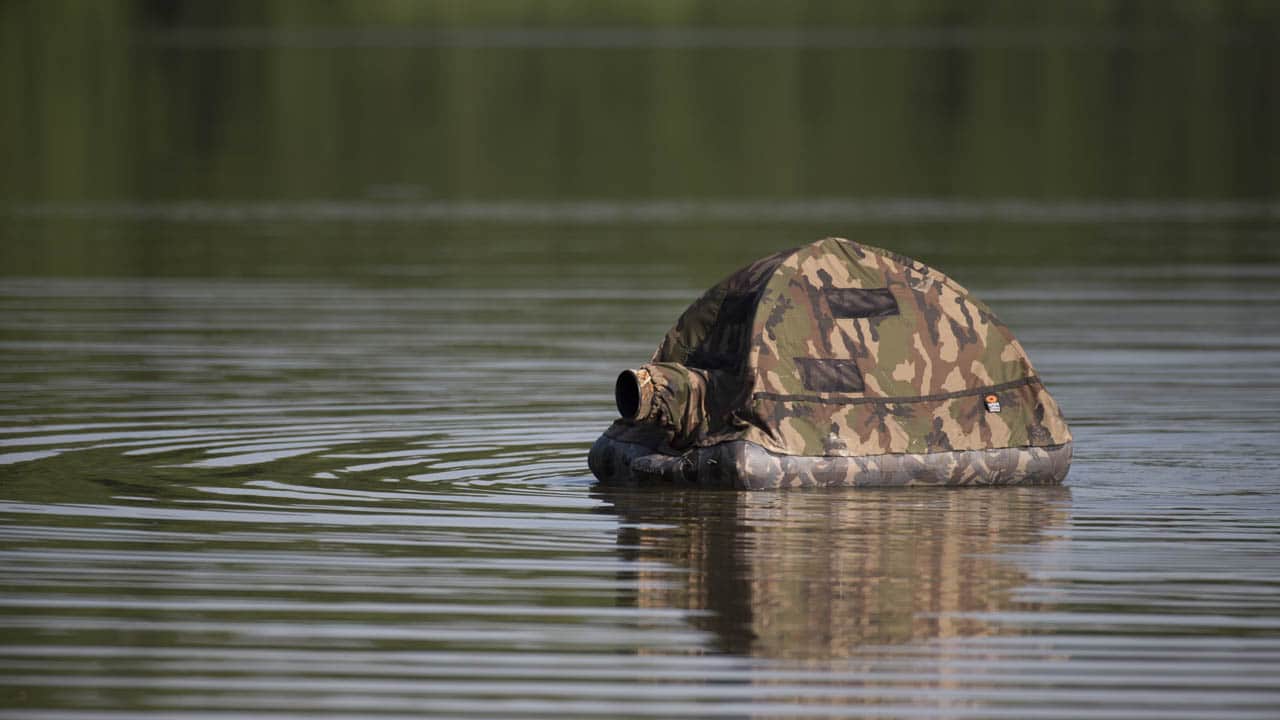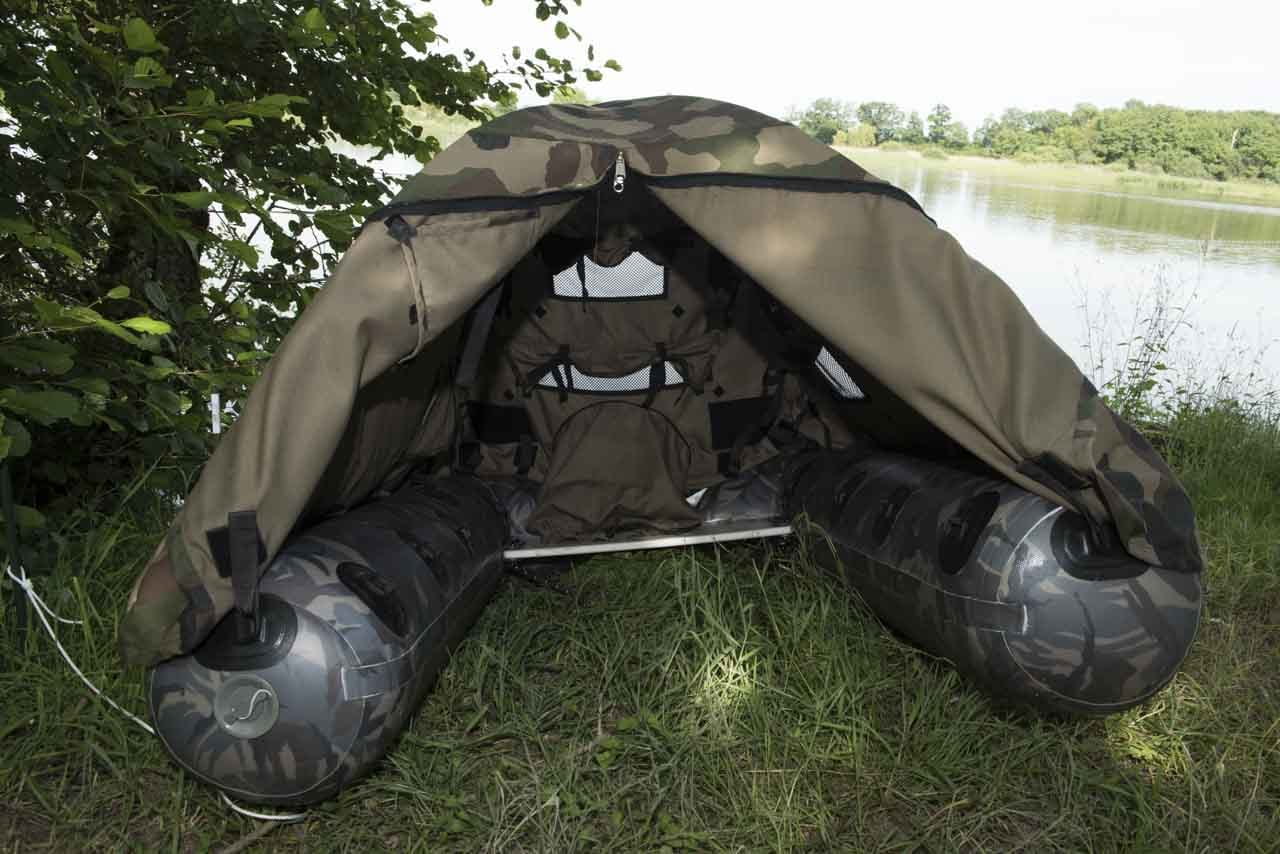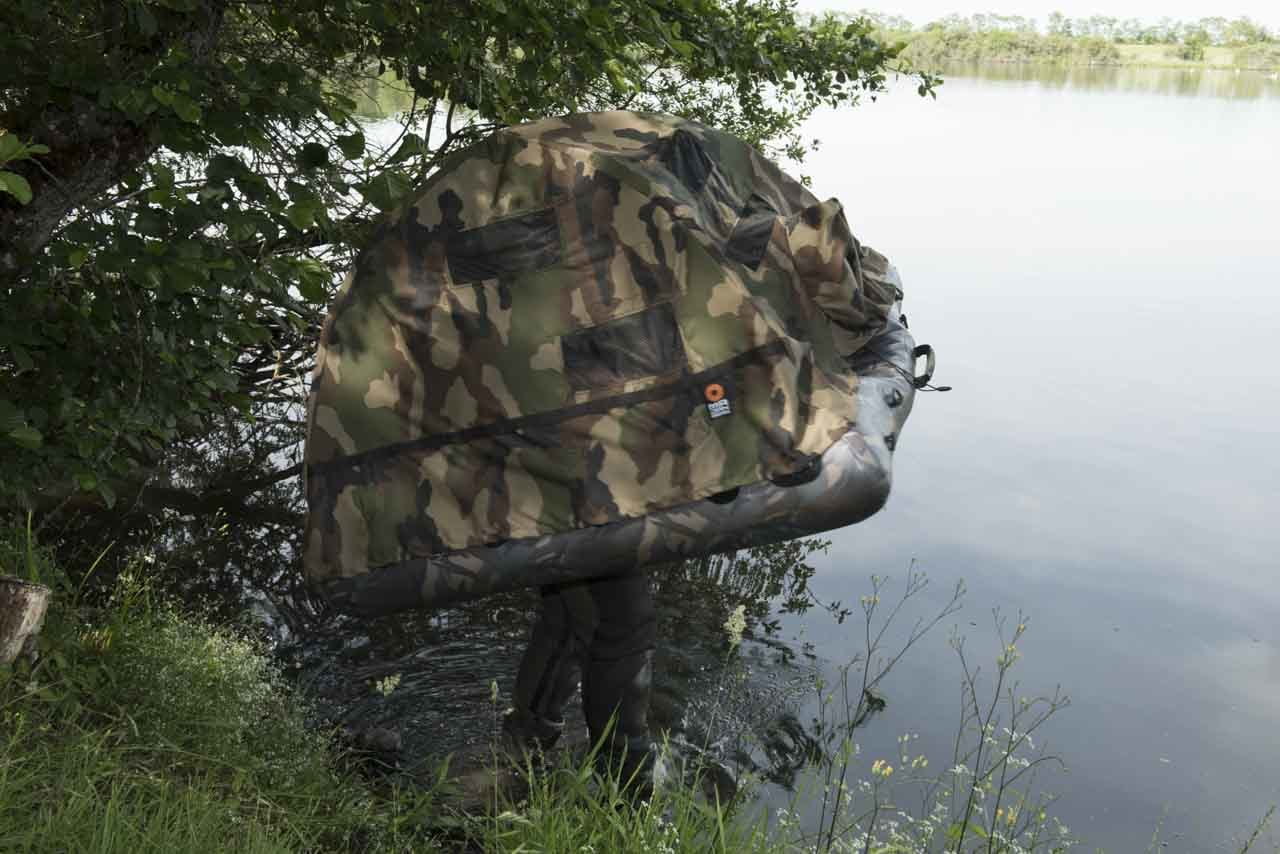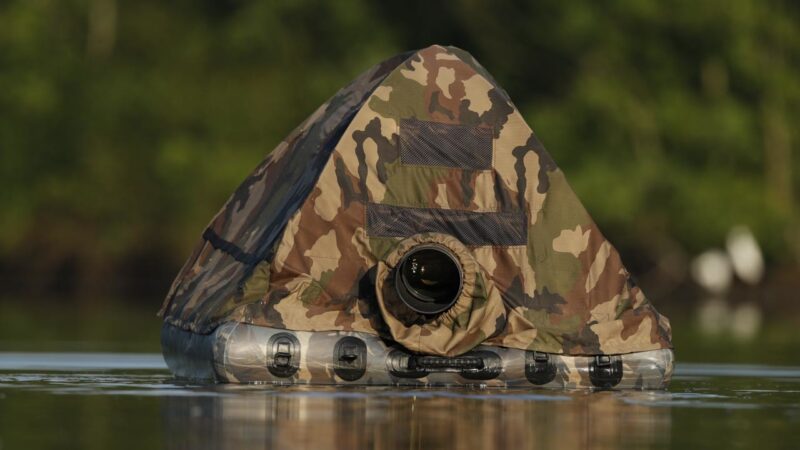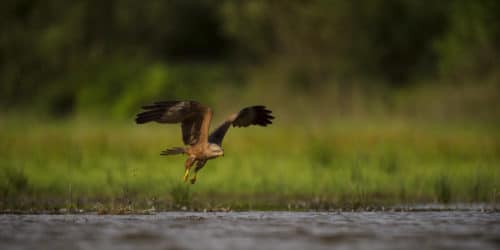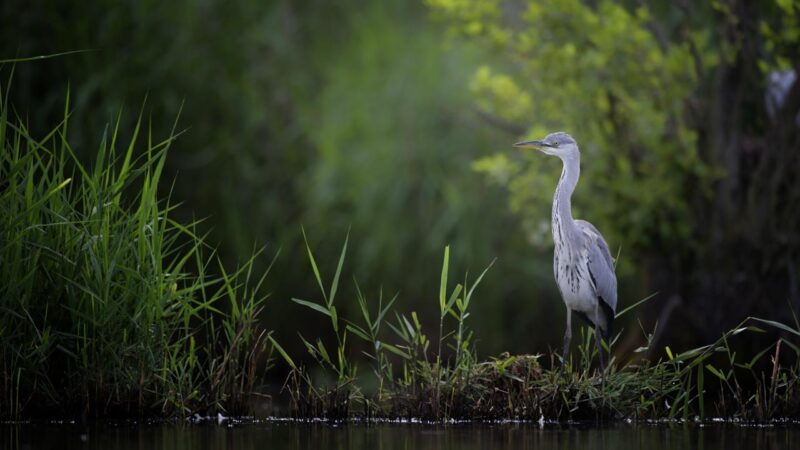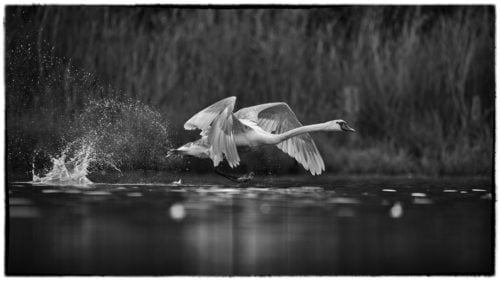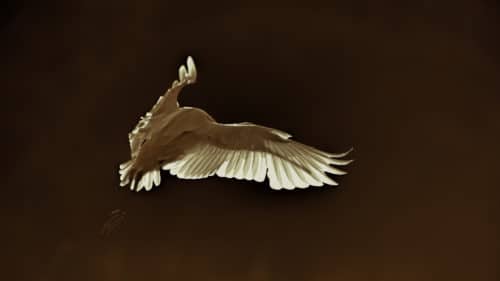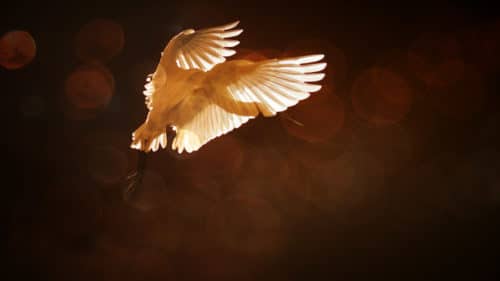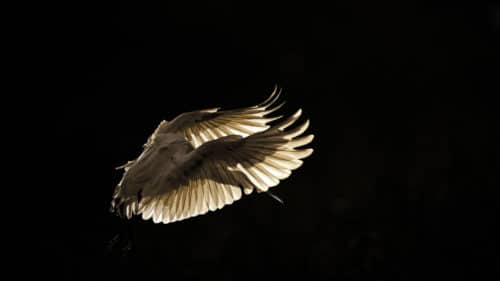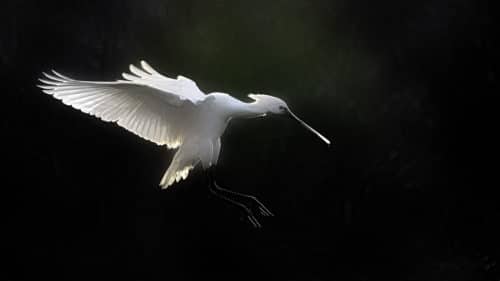Taking a picture from water’s level requires the use of a floating hide. The choice of this tool is essential for the realization of interesting and creative photos. For years, we used handcrafted floating hides. Recently, we discovered the company MrJan Gear which designs and manufactures floating hides that perfectly meet our requirements and needs as professional photographers.
As a rule, we normally do not use our blogs to talk about materials and equipment that are used in the creation of our photos, but this time we will make an exception. We decided to deviate from this rule because this product is simply unique and extraordinary for wildlife photographers who are passionate about photo sessions in wet areas. Our experience with the floating hide has helped us to create truly exceptional photos, and we would like to share this knowledge with you.
The Utility and Importance of a Floating Hide
A floating hide allows photographs to be taken in wet areas while walking in water with the camera attached to a ball head or a gimbal. It is covered by a tent to hide the photographer from the animals. A floating hide can be used in ponds or at sea on shores of the beach. The photographer only needs to walk and use a pair of waders to avoid getting wet.
Even its name, “floating hide” indicates its function, that it “hides”. The photographer is hidden from the eyes of the animals. But unlike the fixed hide that is used to photograph animals on the ground, it allows the photographer to move around the subjects allowing to make photographs with unique points of view. The photographer can thus better manage the scenery and the light to compose and frame the scenes.
The floating hide support provides the ability to photograph subjects at eye level. It avoids the visible high angle photography effect when the photo is taken from a bank. The shots have a lot of impact and a very great strength in the compositions.
In addition, a floating hide is mobile. It provides the closest access to live birds, insects, and mammals in wetlands. The photographer can thus vary his framing by making wide shots or tighter shots, such as portraits.
In general, if the photographer respects the safety distances and calmly carries out techniques of approach in the greatest silence, the animals do not escape. We have often approached herons, grebes, or coypu a few yards away without ever arousing the slightest suspicion. The animals photographed do not show any signs of stress, fear, or worry. For example, we have often captured scenes of feeding or complicity between chicks and adults.
But we always abide by one essential rule: never enter an animal’s safety zone. This limit is very easy to determine. Just observe the animal in the camera’s viewfinder. When it begins to show signs of feverishness movements with its body or head, we stop our progression and begin to slowly retreat. Sometimes it is too late because the bird flies away or the coypu dives. But often it is enough to reassure the animal. Once we are out of the limit of the security zone, we wait a few minutes before making our first pictures. Always give the animal a little time to integrate the floating hide into its environment.
A floating hide is an indispensable accessory for the wildlife photographer who wants to make unique and creative photographs of live animals in wetlands. But the choice of a good one is not as simple as it seems.
Mr. Jan Gear’s Floating Hides
For years, we used artisanal floating hides made with polystyrene parts on which a tent was mounted. We always thought it was the only possible solution because we did not imagine that a company could invest in the research and development for an equipment not very often used.
It was by researching on the web that we discovered the floating hide created by the company “Mr. Jan Gear”. The company was created by a Belgian, Jan Goddefroy whose passion is to create equipment for outdoor photography and for difficult environments. His passion for this trade inspired him to create photo bags that can be used regularly in so-called hostile environments where it is very cold or very wet. The quality of the zippers and the tightness allows us to perfectly protect our cameras and our lenses. We no longer fear rain, mud or even very low temperatures. We will come back to these photo bags of “Mr. Jan Gear” in another blog.
We contacted Jan Godeffroy by e-mail to learn more about the characteristics of his floating hides. After some exchanges, we were convinced and we ordered two of them. After a few weeks of use, we are presenting our review.
First Observation: The Package and Structure is Impeccable
Our first two floating hides were each delivered in a thick bag. We were initially very surprised because the complete equipment weighs only 3 kilograms (6 pounds). We are very far from the 20 kilograms of the artisanal hide we used before. Once unpacked, we had an inflatable part, an epoxy plate to fix the gimbal, a tent, and two hoops.
- The set can fit very well in a medium size travel suitcase. This opens interesting doors for future trips to Romania, Ukraine or regions with beautiful wetlands.
- The flange is inflated with a pump in two minutes. A high-quality anti-return valve prevents it from deflating.
- The epoxy plate that will support the ball will require 7 minutes to be mounted. The system based on rot-proof tips is ingenious.
- The hoops are mounted in less than one minute.
- The tent is fixed on the hoops in three minutes.
Finally, the floating hide is assembled in 12 minutes. Surprisingly, the assembly of our old one required us more time. The whole design of this new floating hide is very aesthetic, and the size of the structure is small. The fabric composing the dome is of excellent quality, as it resists bramble thorns and does not fade in sunlight.
Second Observation: It is Impressively Lightweight
After mounting the blind on the mainland, we grab it with two inside handles to place it in the water. We fixed our gimbal, which has a weight of two kilograms. The whole setup is light. We can move easily while walking. Now we can get out of the ponds where we want. In the event of a thunderstorm, we will be able to leave immediately and return to our car without having to cross the pond in the hide. The floating hide’s lightweight feature is an important safety advantage.
Third Observation: We Are Truly Close to the Water’s Surface
Once the camera is attached to the gimbal, we find that we are much lower to the water’s surface than when we used our previous blinds. We are almost at the water’s level. Although we were satisfied with our old floating hides, we have come to value the closeness of the new floating hides, because we can shoot at the eye level of the animals, including ducks and grebes. Even for photographers whose size is more than 1.80 meters (6 feet), the shooting is relatively easy.
The first movements in the pond are impressive because the whole system is easily maneuvered. Being perfectly silent, it does not create waves.
Our only regret is that it does not have a small box to store the keys of our car. But this problem will be solved in a few days with the use of a small waterproof bag fixed onto a hoop.
The small windows are perfectly designed for a photographer to see the animals without being seen. Small nets on each window protect the photographer. On each net, there is a small piece of fabric that can be scratched with Velcro. In our old blinds, we were obliged to use safety pins to fasten the protections. The design of the blind was excellently crafted.
Another Advantage: It Can Be Used in Wet or Windy Weather
During our weeks of shooting, we were subjected to many climatic hazards. Some days we experienced strong winds. The dome shape of the blind resists weather conditions well. Even though it is very light, our floating hide never glided away. We had no problems resisting the wind.
On other days, we had rain. Fortunately, we never had any water inside the blind because the dome shape immediately evacuates any water that collects on the tent. It is very waterproof.
Normally, we experienced sunny days with heavy heat. The windows were wonderfully designed as well because after opening them, we experienced slight drafts of air which were very refreshing.
Finally, Mr. Jean Gear’s floating hide was perfect in all the climatic conditions we encountered.
A Huge Advantage: Photographing in 5 Centimeters (2 inches) of Water
The craft blinds we used for years were built with very bulky polystyrene parts. The submerged part of the carriage was about 15 to 20 centimetres (8 inches). It was virtually impossible to move when the depth of water became less than 20 centimetres. Moreover, the weight prevented us from transporting them easily on a mudflat.
We were pleasantly surprised to discover that with the blinds of “Mr. Jean Gear” we could advance over areas of barely 5 centimetres (2 inches) of water. Indeed, this year the drought has been significant and many ponds’ water levels have drastically fallen. Sometimes we had to move on our knees on some interesting mudflats to make photos.
The adaptability of the floating hide was a huge advantage. We could approach shorebirds like the northern lapwings and make exceptional photos, even when the water levels were shallow. This kind of approach was not possible for us when using our old floating hides.
“MrJan Gear” Floating Hides are Solid
To conclude this review of “MrJan Gear” floating hides, we must admit that despite its low weight and its construction with inflated bladders, we were surprised by the robustness of the materials used. We have no problems during all these weeks of intense use.
Finally
The floating hides made by the company “Mr. Jan Gear” have become indispensable accessories for us. They are quick to assemble, easy to utilize, very manoeuvrable, adaptable to all weather conditions, robust, and solid. The icing on the cake is that they are compact and can easily fit into a medium size suitcase. We are completely satisfied with our choice. We look forward to our next photo sessions in the ponds using this equipment.
Some pictures taken from the Floating Blinds made by MrJan Gear
This story was first published by Amar Guillen on his website.
Would you like to know more about floating hide photography? Download our free inspirational guide!

